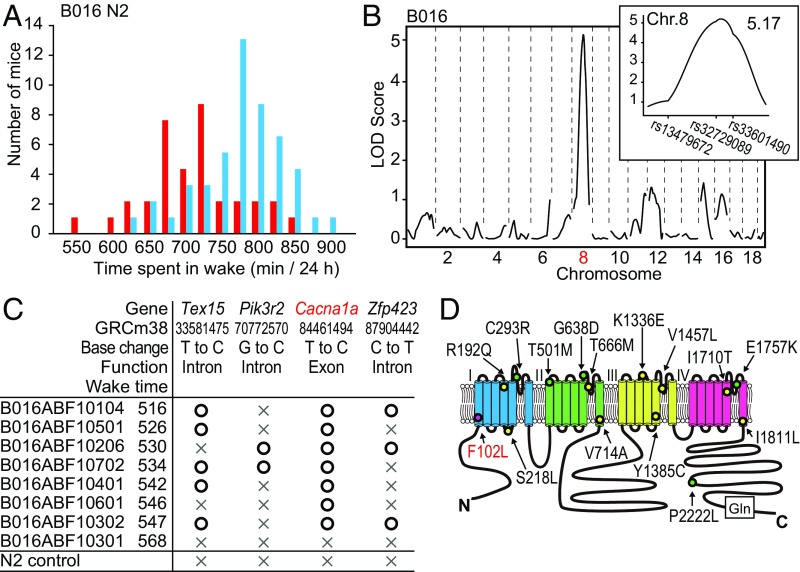Fig. 4.
Identification of the Cacna1a gene mutation in the Drowsy pedigree showing a heritable but weak sleep phenotype. (A) Wake time distribution of retrospectively genotyped Drowsy N2 littermates. Cacna1a+/+ (blue) and Cacna1am/+ (red) mice. (B) QTL analysis of the Drowsy pedigree for total wake time (n = 81). (Inset) LOD score peak between rs13479672 and rs33601490 on chromosome 8. (C) Mutational analysis of affected mice (bottom 20% in total wake time) and unaffected mice (top 20% in total wake time) within the Drowsy pedigree. (D) Structure of the CACNA1A protein indicating the F102L mutation (this study; pink), together with examples of human missense mutations reported in familial hemiplegic migraine (yellow) and episodic ataxia type2 (green), as well as the polyglutamine repeat found in spinocerebellar ataxia type 6 (Gln).

